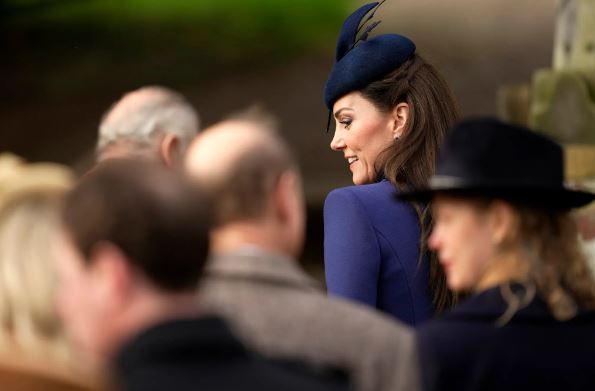Catherine, Princess of Wales, made her customary appearance at St. Mary Magdalene Church in Sandringham, Norfolk, England, accompanied by her husband, Prince William, and their three children, Prince George, Princess Charlotte, and Prince Louis, all dressed in coordinated royal blue attire. As she greeted well-wishers and the press, her elegance and poise garnered praise from publications like Town & Country. However, following this public appearance, Catherine retreated from the spotlight.
On January 17, Kensington Palace stunned the public with the announcement that Catherine, 42, formerly known as Kate Middleton, had undergone planned abdominal surgery at the London Clinic. This revelation came as a surprise, compounded by the subsequent announcement that King Charles III, aged 75, would also undergo treatment for an enlarged prostate. With two prominent members of the royal family facing health challenges, speculation and rumors about Catherine’s condition ran rampant.
Despite attempts by the palace to reassure the public, questions persisted. Prince William scaled back his royal duties to be by his wife’s side during her recovery, even bowing out of a memorial service for his godfather, King Constantine of the Hellenes, further fueling speculation. A palace source told People magazine that Catherine was “doing well,” but the lack of specific details about her surgery only intensified public curiosity.
The nature of Catherine’s surgery remained shrouded in mystery. While Kensington Palace confirmed the procedure’s success, it refrained from disclosing further details about her diagnosis or prognosis, except to state that her condition was “not cancerous.” The palace emphasized Catherine’s desire for privacy and normalcy for her children, hoping to quell public curiosity.
In late January, the palace announced Catherine’s discharge from the London Clinic, revealing that she would recuperate at Adelaide Cottage in Windsor Home Park. Her office indicated that she was unlikely to resume public duties until after Easter, allowing her time to focus on her recovery and family.
During her hospital stay, Prince William visited Catherine, but her children were unable to see her due to hospital regulations. Instead, the family reportedly communicated via FaceTime. The palace dismissed conspiracy theories about Catherine’s health as “total nonsense,” attempting to dispel unfounded rumors circulating in the media.
One such rumor, propagated by Spanish journalist Concha Calleja, claimed that Catherine faced severe complications post-surgery, necessitating drastic measures to save her life, including induced coma and intubation. Kensington Palace swiftly rebuked these claims as ludicrous and baseless, emphasizing its commitment to providing accurate information to the public.
Despite the palace’s efforts to manage the narrative surrounding Catherine’s health, the lack of transparency only fueled speculation. As the public awaited updates, media scrutiny intensified, highlighting the delicate balance between privacy and public interest in matters concerning the royal family.
In the absence of concrete information, Catherine’s health remained a topic of fervent speculation, underscoring the public’s enduring fascination with the royal family and the challenges of navigating personal health matters in the public eye. As Catherine continued her recovery in seclusion, the world awaited further updates, hoping for her swift return to health and public life.

